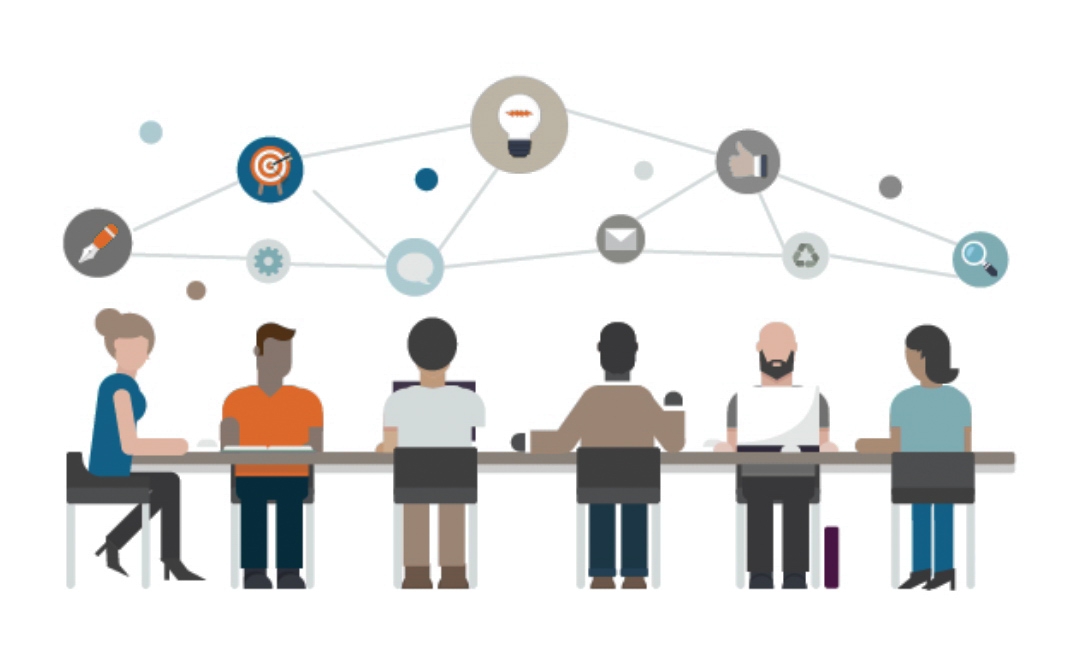Seven Powerful Steps to Responsive Problem Solving
The other day I was reflecting over the difficulties that we face in our normal lives. When a problem occurs, we immediately focus on finding the solutions and many times the solutions are superficial in nature. As I was pondering on this I happened to come across a quote purportedly said by Einstein ‘If I have one hour then I will spend fifty five minutes in writing the problem statement and solving it in five minutes’ which made me more curious that what should be the problem solving technique which gives value to it, weightage and enables a process to write a good problem statement and that’s when I remembered to having used Action Learning and thus I wanted to share this with everyone.
Action learning, simply put, is a problem-solving technique where a group of individuals meet together along with a skilled facilitator to develop creative solutions for complex problems. It is a highly effective approach for designing a process for learning and can be accomplished through Introspection, Reflecting, Critique and utilizing Problem solutioning techniques. It is an effective approach to development in both individual level and team level. Organizations which value growth of their employees greatly benefit from this technique because it encourages team building, increase engagement and accountability, deeper competency and empower workforce.
In this era we all are a part of increasing globalization as well as tough rivalry between organizations. There in a rapid increase in the problems which are complex as well as new in nature which needs creative problem solving. Action learning provides us with that along with engaging the participants to brainstorm as well as upgrade their creative problem solving skills. Old repetitive solutions do not work anymore and therefore organizations are depending upon action learning to give their problems a new perspective for solutions. As Einstein quoted “The formulation of a problem is often more essential than its solution, which may be merely a matter of mathematical or experimental skills”, thus it is necessary to find the problem and there are basic seven steps for problem identification that is introspection, questioning, reflection, critique, feedback, problem articulation and solution.
Benefits of Action Learning
Individual level-
- Develop key problem solving skills.
Action learning involves some key problem solving skills which further enables the person to assess the matter and calmly identify the solutions thus developing capability to solve problems. These problem solving skills include: active listening, analysis, research, creativity, communication, dependability, decision making and team building. These skills are essential to Action learning thus each member develops/enhance their skills through the process.
- Improve critical thinking.
One of the most important skills in action learning is critical thinking. One identifies the root problem through Questioning. This exudes clarity of the vision/goals one wishes to accomplish through the session. Questioning a matter of issue engages multiple perspective thinking and the number of perspectives used in defining problems is significantly correlated with the number of solutions generated later.
- Creative problem solving.
Action learning encourages the members to explore ideas. It can be tempting to consider solutions that you’ve tried before as our minds tend to return to habitual thinking patterns that stop us from producing new ideas. Therefore creative problem solving enables us explore ideas, brainstorm for possible solutions/original solutions and narrow it down to the best and apt one.
Team level-
- Collaborative learning.
The point of action learning is to empower people to learn from themselves and others around them. The four step process: Questioning, Reflecting, Feedback and Problem solving allows each one to participate in the discussion since each member is required to actively contribute to the process. Every member provides insight to the problem and every member gives their reflection thus making it a shared decision process. We have a greater chance of finding solutions with a focused group than a stressed individual.
- Workforce transformation:
Action learning is where employees can engage, apply and reflect on the knowledge gained right at the moment. This provides better outcome. The knowledge gained through learning experiences is retentive thus the learner can access, adapt and apply repeatedly and build upon it. This exponentially increases the competency of employees and workforce as a whole.
- Learning organization:
Action learning facilitates diffusion of knowledge which is a key factor to any learning organization. The leaders build a common vision with shared values and enable the whole team to think together to achieve common goals.
In Conclusion, ‘Action learning’ empowers people to learn from themselves and others around them and is designed to develop effective skills, deeper understanding, effectiveness and develop problem solutioning skills.
Action Learning is a seven step process of introspection, questioning, reflection, critique, feedback, problem articulation and solution. A problem solving process that includes every participant in to a collaborative discussion and thus actively contribute to the solution and develops encourages self-ownership. Every participant provides insights to the problem and thus making it a shared decision process
Questions are the language of action learning. This exudes clarity of the vision/goals one wishes to accomplish through the session. Questioning a matter of issue engages multiple perspective thinking and the number of perspectives used in defining problems is significantly correlated with the number of solutions generated later.
Action learning is where employees can engage, apply and reflect on the knowledge gained right at the moment. This provides better outcome. The knowledge gained through learning experiences is retentive thus the learner can access, adapt and apply repeatedly and build upon it. This exponentially increases the competency of employees and workforce as a whole.
The action learning groups help the managers to resolve problems in their institutions, develop manager’s skills of working within teams, and provide a vital form of support for managers. It is instrumental not just for the managers but also the participants. They bring real problems to the discussion with the aim of generating innovative and creative ways of dealing with complex problems and facilitating learning through the development of practical solutions that are implemented with planned intent. In addition, the time, energy and financial resources used to facilitate action learning is rewarded by improved skill of managers and better quality of care for customers.



